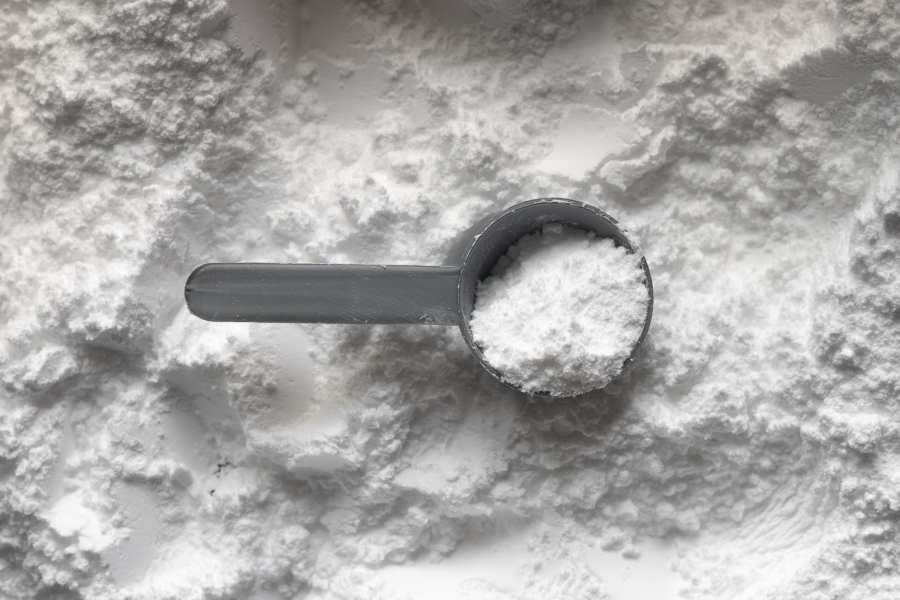The safety and well-being of our beloved canine companions are paramount concerns for every responsible pet owner. With various grooming products available, some dog owners may wonder whether baby powder, commonly used for human infants, is safe for their furry friends. This article delves into the topic to address the potential risks and considerations associated with using baby powder on dogs. By exploring the unique characteristics of a dog’s skin, expert opinions, and alternative grooming options, we aim to provide valuable insights to help pet owners make informed decisions about their dog’s grooming regimen.
Is Baby Powder Safe For Dogs?
Using baby powder on dogs is generally not recommended. While baby powder is safe for humans, it can harm dogs. Dogs have different skin characteristics and sensitivities compared to humans, making them more prone to irritation and allergies from the ingredients in baby powder. Inhalation of the fine particles can also be harmful to dogs. Instead of using baby powder, it’s best to opt for dog-specific grooming products or natural alternatives that are safe for canine skin. Always consult with a veterinarian before introducing any new grooming product to ensure the well-being of your furry friend.
Ingredients In Baby Powder
Baby powder typically contains critical ingredients designed to provide moisture absorption and a smooth, dry feeling on the skin. However, it must note that formulations can vary between brands and products. Below are the common ingredients found in traditional baby powders:
Talc: Historically, talc has been a primary ingredient in many baby powders. Talc is a soft mineral known for its moisture-absorbing properties, keeping the skin dry. However, concerns have been raised regarding the potential link between talc and respiratory issues when inhaled over long periods, especially for infants. Due to these concerns, many manufacturers have replaced talc with safer alternatives.
Cornstarch: Cornstarch is a natural, plant-based alternative to talc, and it serves as a moisture-absorbent in baby powders. Cornstarch is generally considered safer than talc and is less likely to cause respiratory issues when inhaled.
Fragrance: Some baby powders contain fragrance to provide a pleasant scent. However, fragrance can be a source of skin irritation for some individuals, including dogs. For this reason, unscented baby powders or those with natural fragrances may be preferable when considering use on pets.
Mineral Oil: Baby powders may contain mineral oil to add a silky feel and aid in spreading the powder on the skin. While mineral oil is generally considered safe for humans, it is not recommended for dogs due to potential ingestion risks.
Zinc Oxide: This ingredient is known for its soothing and protective properties, often used to help alleviate skin irritation or diaper rash. While it can benefit humans, its use on dogs should be cautiously approached, as dogs may be sensitive to zinc oxide.
Dogs And Their Unique Skin Characteristics
Dogs possess unique skin characteristics that set them apart from humans. Understanding these differences is essential for responsible pet care and decision-making about grooming products and practices. Here are some critical aspects of a dog’s skin:
Thinner Epidermis:
The epidermis, or outer layer of the skin, in dogs, is thinner than in humans. This makes their skin more vulnerable to damage from environmental factors, such as UV rays and harsh chemicals.
Fewer Sweat Glands:
Dogs have fewer sweat glands compared to humans. Instead of sweating to regulate body temperature, dogs primarily use panting to cool down. Consequently, dogs are more prone to overheating and may be less efficient in eliminating toxins through sweating.
Fur And Hair Follicles:
Dogs have fur, which protects them from the elements and helps regulate their body temperature. Each hair follicle is associated with sebaceous glands that produce natural oils to moisturize and protect the skin and coat.
Ph Balance:
The pH level of a dog’s skin is different from that of humans. Human skin is more acidic, while a dog’s skin tends to be more neutral. Using products designed for human skin on dogs can disrupt their natural pH balance and lead to skin issues.
Allergies And Sensitivities:
Dogs are prone to various skin allergies and sensitivities. Certain ingredients, including those in some grooming products, can trigger allergic reactions, leading to itching, redness, and discomfort.
Lick And Ingestion Behavior:
Dogs groom themselves by licking their fur. If grooming products are used on a dog, and they lick the treated area, they may inadvertently ingest some of the product, which can be harmful if the ingredients are not dog-friendly.
Healing Abilities:
Dogs’ skin has a remarkable ability to heal itself, but it can still be susceptible to irritations and infections. Proper care and using products suitable for dogs can support their skin’s natural healing processes.
Why Do Some Pet Owners Use Baby Powder On Dogs?
One of the primary reasons some pet owners use baby powder on their dogs is to absorb excess moisture on their skin or coat. Baby powder, especially those containing talc or cornstarch, is known for its moisture-absorbing properties. It can be appealing for dog owners looking to keep their pets dry, particularly in areas prone to dampness or humidity.
- Baby powder is often used for its pleasant scent, and some pet owners may believe that using it on their dogs can help mask or reduce pet odors. The powder’s fragrance can temporarily cover unwanted smells, making the dog’s coat smell fresher between baths.
- Applying baby powder on a dog’s coat can give it a smoother appearance and a soft, fluffy texture. Some pet owners may find this aesthetically pleasing, especially for breeds with long or curly fur.
- Using baby powder on dogs might be a practice passed down from older generations or recommended by friends or family. In some cases, people assume that if it’s safe for babies, it must be safe for dogs as well.
- Some pet owners may need to know the potential risks of using baby powder on dogs. They might not know that dogs have different skin characteristics and sensitivities than humans, making them more vulnerable to adverse reactions from certain ingredients in the powder.
- Baby powder is readily available and relatively inexpensive. Pet owners might opt for baby powder as a quick and accessible solution for specific grooming concerns without considering the potential risks.
Using Baby Powder On Dogs: Risks And Considerations
Using baby powder on dogs may seem harmless, but it poses several risks and considerations that every pet owner should be aware of before incorporating it into their grooming routine. Here’s a detailed exploration of the potential risks and important factors to consider:
Baby powder is typically a fine, powdery substance that can become airborne quickly. When applied to a dog’s coat or skin, there is a risk that the dog may inhale the powder particles while grooming itself or during everyday activities. Inhalation of baby powder can irritate the respiratory tract and may lead to respiratory issues, especially in dogs with pre-existing respiratory conditions.
Dogs have different skin characteristics and sensitivities compared to humans. Baby powder contains various ingredients, such as talc or fragrances, which can cause skin irritation and allergic reactions in dogs. Redness, itching, and discomfort are common signs of an adverse reaction, and some dogs may be more sensitive to these ingredients than others.
Dogs are curious creatures and may lick their fur or skin after applying baby powder. Ingesting baby powder is not safe for dogs, as some of the ingredients can be toxic or harmful when consumed in larger quantities. Ingestion of baby powder can lead to digestive upset, vomiting, and other gastrointestinal issues.
Consistent baby powder use on dogs may lead to cumulative effects over time. Repeated exposure to certain ingredients can exacerbate skin irritation or respiratory problems, making it vital to consider the long-term implications of using baby powder on dogs.
Instead of using baby powder on dogs, pet owners should opt for dog-specific grooming products. Many grooming products designed for dogs are formulated with unique skin characteristics in mind, reducing the risk of adverse reactions. Natural alternatives like cornstarch can also be a safer option for absorbing moisture on a dog’s coat.
Before introducing any new grooming product, including baby powder, it is crucial to consult with a veterinarian. A vet can assess your dog’s needs, identify allergies or sensitivities, and recommend safe and suitable grooming products.
Above all, responsible pet care involves being attentive to your dog’s well-being and prioritizing its health and comfort. Avoiding baby powder and choosing safe grooming practices is an essential part of being a responsible and caring pet owner.
Final Words
While baby powder is a common household item used for humans, it is not recommended for use on dogs due to the potential risks and considerations associated with it. Dogs have unique skin characteristics and sensitivities, making them more susceptible to adverse reactions from certain ingredients found in baby powder. The inhalation risks, skin irritation, and ingestion concerns make baby powder an unsuitable dog grooming product. Instead, pet owners should opt for dog-specific grooming products or natural alternatives that are safer and better suited for canine skin. Responsible pet care involves prioritizing the health and well-being of our furry friends above all else.




















Leave a Reply